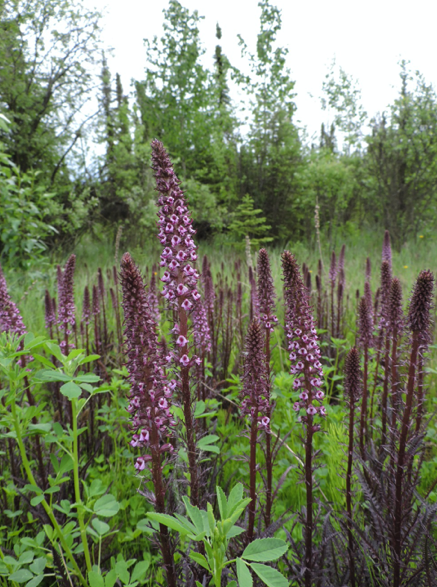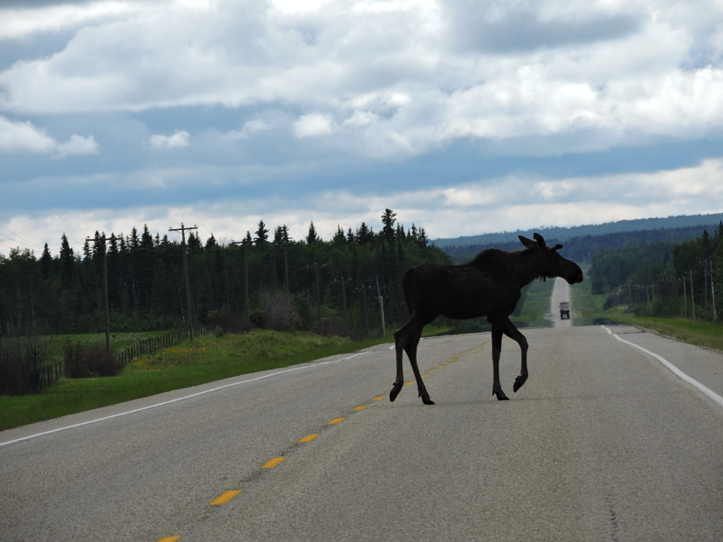It’s great to be back!
24 juin 2020 17:22 1 commentaire
What an amazing feeling it is to be able to be writing my first blog of the season for the second year in a row! I am so happy to have been given the opportunity to share my experiences this summer once again.
For this first blog I will be telling you a bit about myself, what I do at Mercer Peace River and giving an idea of the topics that I plan to be blogging about this summer.
This September will begin my third year at the University of Alberta in a Bachelor of Science in Environmental and Conservation Sciences, majoring in conservation biology. As you can probably tell from my program of choice, I love wildlife, science and observing the world around me. I also have a developing interest in natural resource economics.
Peace River, Alberta is my hometown and also the home of Mercer Peace River’s pulp mill. The mill is an important employer for the towns, villages and rural communities surrounding it. Located in the valley, the town of Peace River is surrounded by hills covered in both coniferous and deciduous trees. While the cold winters and small population do not appeal to everyone, we do boast beautiful landscapes, lots of outdoor recreation and a unique and interesting history (a blog topic perhaps?).
Not only is working at Mercer Peace River a great job for me because it is in my hometown, but also because each day can be so different from the last. Some days I am outside doing roadwork or learning to scale trees, and others I may be working with GIS software or Excel. Either way, there is always a lot to learn.
On my days off from Mercer, I spend a lot of time working on my family’s mixed cattle and grain farm. The older I get the more I realize that what I learn in school, what I learn at work, and what I learn on the farm can complement and build off of one another.
It has been nearly two months since I have returned to my summer student role at Mercer as Planning/Silviculture Assistant (wow does time fly). In this time I have worked on a large variety of tasks including assisting with the graveling of roads, and participating in the process of making Forest Harvest Plans. A lot of time and work has to go into planning and preparing to harvest and engaging with affected members of the community. Being able to observe so much of this process from start to finish has been illuminating and informative.
Throughout the next ten weeks of blogging I plan to talk more about my job at Mercer, offer some information and pictures of local wildlife, and the community near and dear to my heart. As well, I plan to include information and tips about making herbariums which many people in forestry or related post-secondary programs are required to make. Hopefully some of what I have learned over the past year will be helpful or appeal to someone who likes to press plants for fun, like myself. Practicing plant identification can prove useful in forestry where noxious weeds have to be managed, and many plants can serve as indicators of site quality, moisture, etc.
Tip #1: When making a herbarium, it is a really good idea to take pictures of the plant before you press it, include some pictures with the surrounding habitat, as well as some showing the flower parts (if present) up close for later identification.
Tip #2: If you’re making a herbarium for a plant identification course this summer, start now! Many plants flower early in the summer, and only for short periods of time. Having a flower present can be crucial to the identification process.
That’s all for my first blog! Enjoy the pictures below (taken on my way home from work last week) and come back again, my next blog will include more herbarium tips and pictures catering to both fawn and frog lovers. Feel free to leave a question or comment!

“Pedicularis groenlandica” This pretty purple plant grows along the roadside near a stand of black spruce, it is called Elephant’s Head and it is easy to see why when looking at the unique shape of its flower which resembles the trunk and ears of an elephant.

“Healthy looking moose shows off for the camera” Moose, while in my opinion beautiful and to be cherished, can be a dangerous hazard of the road across Canada. Paired with distractions, fog, ice and other poor conditions, meeting a moose can quickly go from a photo op to a bad day for you, your vehicle, and the moose. For the sake of everyone involved, including the young calves who need their mothers this time of year, drive carefully.

1 commentaire
This is fantastic, Arianna! Reading your blog and how you have tied together that your natural sciences education with your family farm and local community is wonderful. It’s hard to describe the beauty of our local environment, but you have captured it so well – while others may see the area as remote based upon a map, where we live is full of vibrant scenery, plants and animals that thrive and offer us an opportunity to revel in their beauty.
I look forward to watching and reading what you learn and how your career benefits from it.
Great work!